
Fw 187A-0
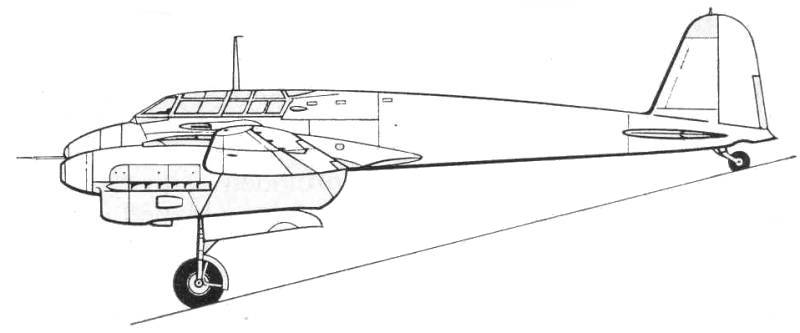
The Focke-Wulf 187 was the product of the fertile mind of Kurt Tank, then the technical director of Focke-Wulf. In 1935 he under took a design study for a single seat twin engine fighter that would offer vastly superior performance to that of any fighter previously envisioned. The Technical Department at the RLM had little interest in the design but Tank managed to convince Wolfram Von Richthofen, then Development Director of the RLM, to authorize a contract for three prototypes of what was to be known as the Fw 187. Tank wanted to use the DB 600 engines but all available output of this engine was earmarked for higher priority projects, so the Jumo 210 was to be used instead. The primary goal of the project was speed so a small cross section fuselage was used. Space was at such a premium that all the primary engine instruments were installed in the engine nacelles.
The first prototype was rolled out in the spring of 1937 and despite its lower rated engines displayed exception performance. In spite of having a loaded weight nearly double that of the Me 109B which was about to be phased into service, it was 50mph faster than the 109 at the same altitude. Shortly after approving the contract for the Fw 187, Von Richthofen was replaced by Ernst Udet and after reviewing the project decided the Luftwaffe had no need for a single seat twin. All twin engine aircraft were to be Zerstorers and required a two man crew and heavy armament. The first two prototypes were too far along to warrant change so the third was built as a two seater. It was test flown in in the spring of 1938 but crash landed shortly there after due to an engine fire. After that damage was repaired it was totaled after it stalled and crashed during a test flight which was blamed on the actions of the pilot rather than the aircraft. A forth prototype was built and subsequently tested at Rechlin and upon receiving favorable flight reports an order was placed for three additional aircraft.
The three additional aircraft were completed in the summer of 1939. These A-0 series machines carried full operation equipment and although the wing loading had increased performance was good enough to warrant proposals for quantity production however the RLM felt that without rear facing armament it did not fulfill the Zerstorer requirement and at the end of testing the aircraft were returned to Focke-Wulf.
When British incursions into German airspace began in 1940, a factory protection unit was formed using the A-0 series aircraft and the V4 aircraft. The aircraft were flown by the factory test and acceptance pilots plus Kurt Tank himself. Tank as a result was promoted to the rank of Hauptmann. In response to the establishment order on 13 February of 1940 Focke Wulf reported it had four serviceable Fw 187s. The Focke Wulf test pilots flew the first industry defense missions in the period from 4 April to 23 August 1940. These missions were, as a rule, were only flown with just the pilot on board and ballast was placed in the rear seat to maintain center of gravity. There are numerous photographs of three of these aircraft wearing tactical numbers. Like the He 100D / He 113 these were intended to convince the Allies that Germany had a new twin engine fighter in service. Unlike the Heinkel aircraft the Fw 187s were actually flown on missions. During its brief existence the Industry Defense Squadron was incorporated into the fighter unit JG 1and flew as part of Johannes Steinhoff's staffel. The aircraft also flew defensive patrols as well as flak familiarization and practice flights. It's difficult to say how successful these missions really were. Focke Wulf company pilot Flugkapitan Wolfgang Stein was awarded the Iron Cross, Second Class for his missions in the Fw 187. In May 1943 Stein shot down a Spitfire. It is also claimed that Kurt Mehlhorn, who crashed to his death during an industry defense mission two years later, also achieved success flying the Fw 187, however the only proof of this is contained in his obituary in the Focke Wulf company newspaper which stated that he had shot down several enemy aircraft in just a few missions.
Following the end of Focke Wulf's industry defense missions the remaining aircraft were sent to the Zerstorer Replacement and Training Group in Vaerlose, Denmark. At least two of the Fw 187s remained on strength at the aerial gunnery school in Vearlose from the end of October 1941 to August 1942. Beginning in 1941 live missions were flown against enemy incursions and on August 1943 aircraft from Vaerlose, including one Fw 187, were scrambled to intercept English intruders.
It has been claimed that for a brief period of time in the Winter of 1940-41 at least three Fw 187s were assigned to the Zerstorerstaffel of JG 77 in Norway. No proof of this has been discovered, however, it is unlikely that the aircraft saw any action with JG 77.
The aircraft was also considered for use in 1942 as a night fighter and high altitude fighter and reconnaissance aircraft but again failed to find support for volume production. When the Me 210 looked as if it was going to be a total failure, Focke Wulf was asked to redesign the 187 to meet the same requirements as the Me 210 using the DB 605 engines. This reached an advanced stage when it was again canceled due to the revival of the Me 210 as the Me 410.
Pilots that had the opportunity to fly the aircraft said it was much more maneuverable than the Bf 110 and had a better rate of climb. One can only ponder what success it might have had if it had been mass produced.
The Kit
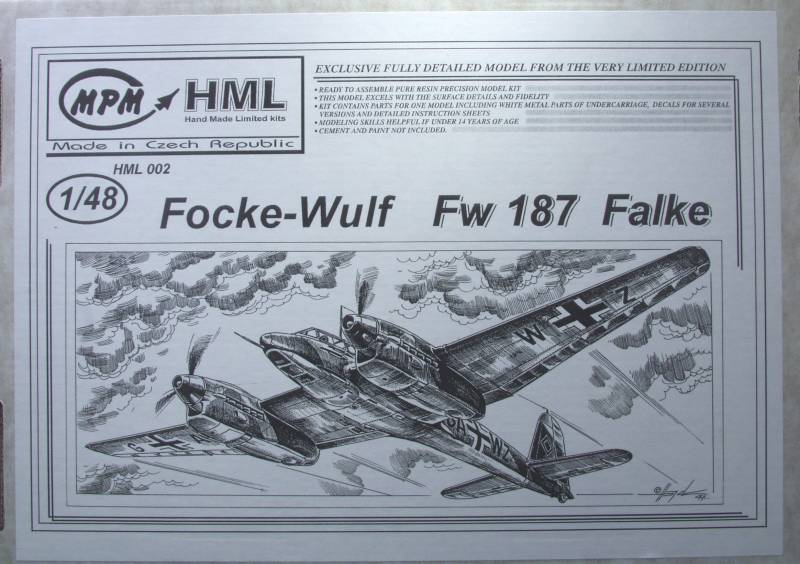
The MPM HML kit is an all resin kit that comes in a sturdy corrugated two part box with typical black and white MPM artwork on the top. Inside the box the resin parts are contained in a compartmented bag with a separate zip lock bag containing some cast metal parts. The resin parts are cast in a tan colored resin. The fuselage is hollow cast and is nearly as thin as the injected molded parts in many short run kits. The surface is smooth and has a matte finish and is mostly defect free. The very thin trailing edges of the tail fin had a few air bubbles along the edge. The fuselage has some detail molded into the cockpit side walls. Removing the casting sprue from the back side of the tail fin will require some delicate work. The panel lines are recessed and about the same as those found on current state of the art kits. The wings are solid from the engines to the wing tip. A separate bottom piece is used across the center of the wing. The bottom center section had a mottled appearance which appears to be from mold release. I found a few pin holes in the wings and the outer section of one had a slight bow in it which will require straightening. There is some light flash on the parts that should clean up easily. The engine nacelles are also hollow cast and feature some internal structural detail where the wheel well are located. The exhaust stacks are molded integral to the cowlings. The control surfaces are all fixed and feature nicely done fabric areas. The tail planes and wings all have nice thin trailing edges. The cockpit features a floor, side consoles, rudder pedals, seat less harness and belts, instrument panel, bulkheads, and radio equipment. The props are the separate blade and spinner type. The tires are not weighted. The landing gear are made up of both metal and resin parts and are very well detailed with actuation struts and hydraulic cylinders and mud guards for the wheels. Most of the small parts are molded in a wafer which I prefer to casting blocks as I feel they are easier to clean up. As mentioned above the cast metal parts are primarily the landing gear parts but the gun barrels are supplied in metal as well. The metal parts have a bit more flash on them than I like to see but shouldn't be that hard to clean up. Altogether there are 61 resin parts and 13 cast metal parts. See photos below.
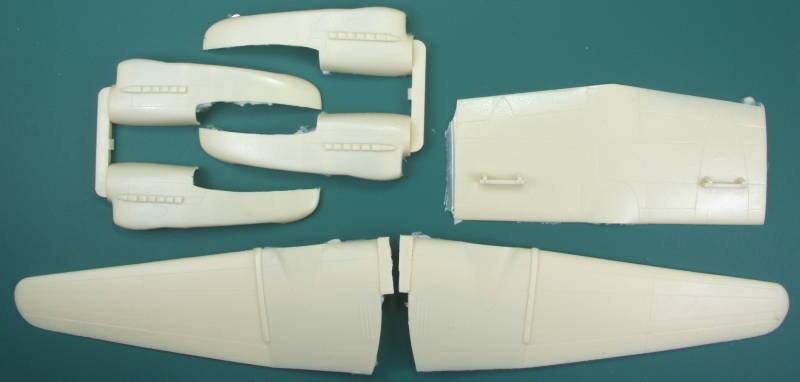
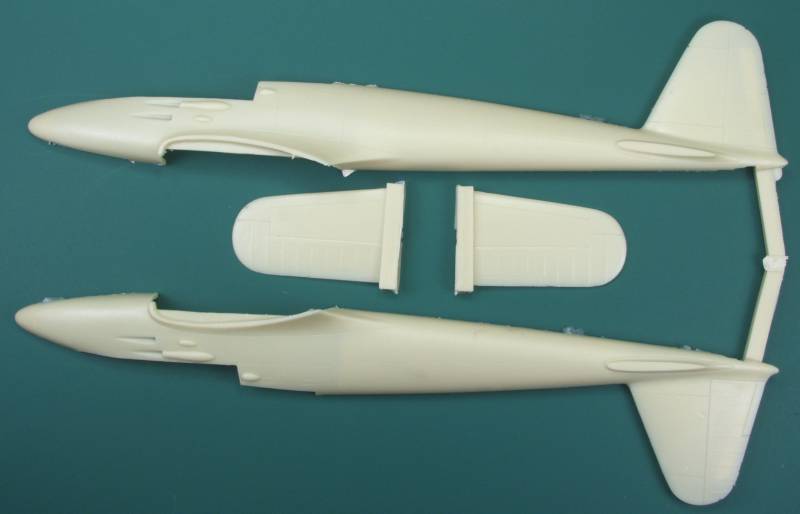
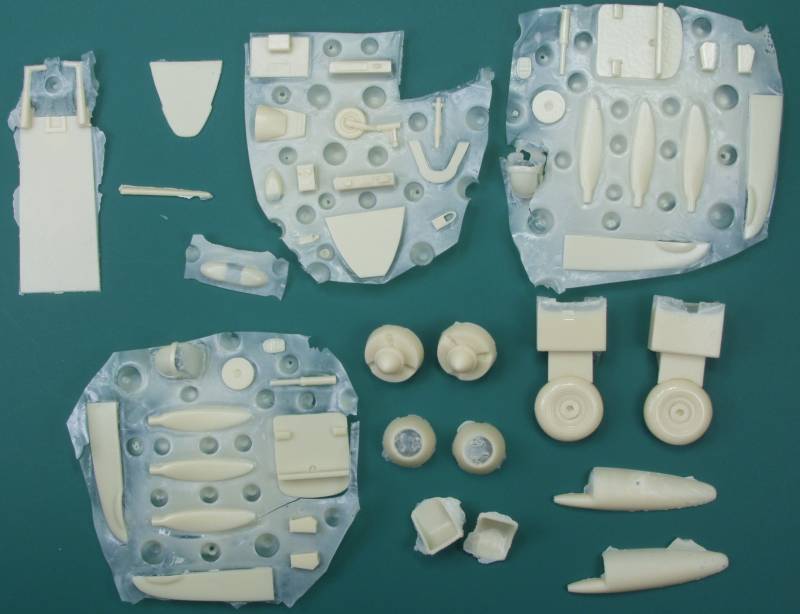
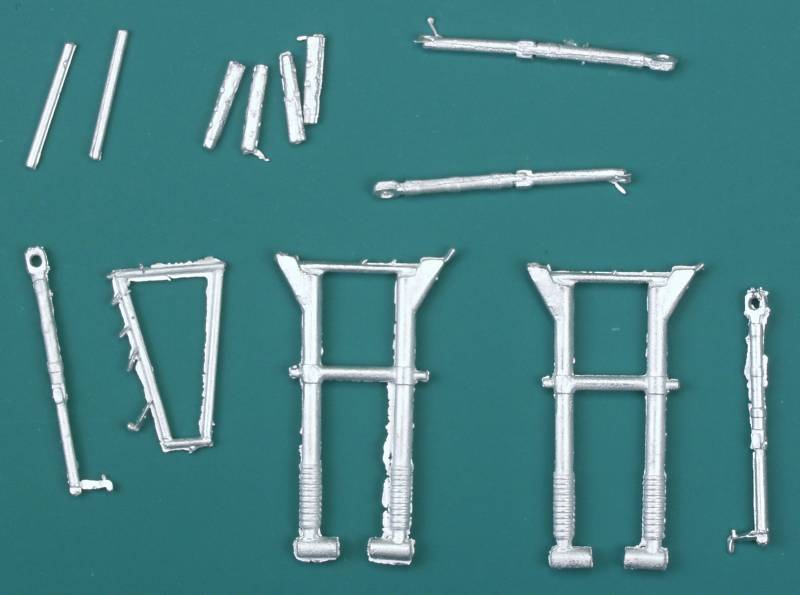
The clear parts are vacuformed, clear and have nicely defined panel lines. One also gets two sets which is nice. See below.
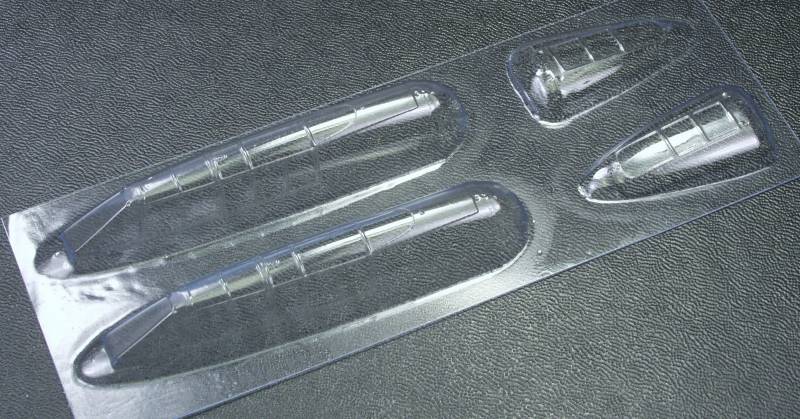
The decals provide marking for three aircraft, are thin and in register. The swastikas are multi part, only one stencil, a fuel type indicator is supplied. See below.
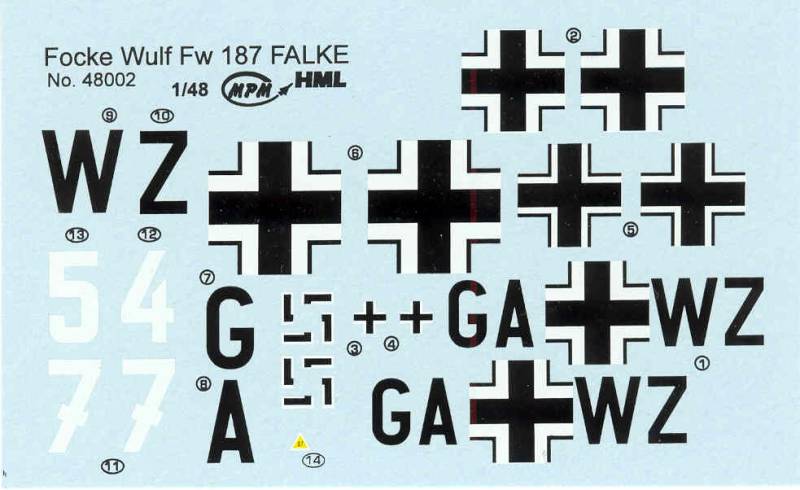
The instructions are printed on two A4 size pages printed on both sides and folded to create eight pages. The first page is history in two languages, page two is a parts map, page three continues the parts map, has a color and icon chart and an ad for other MPM products. Pages four, five, six and seven are assembly drawings and page eight shows the painting and marking instructions.
After Market Goodies
In the review listed below the author felt the propeller blades supplied were not correct so I followed his lead and ordered Ultracast replacement blades [48129] However I'm not totally convinced they are required, I guess it's your call as to whether you need them. The parts are molded in a tan resin and I found no pin holes or short shots, there was a light amount of flash. See below.
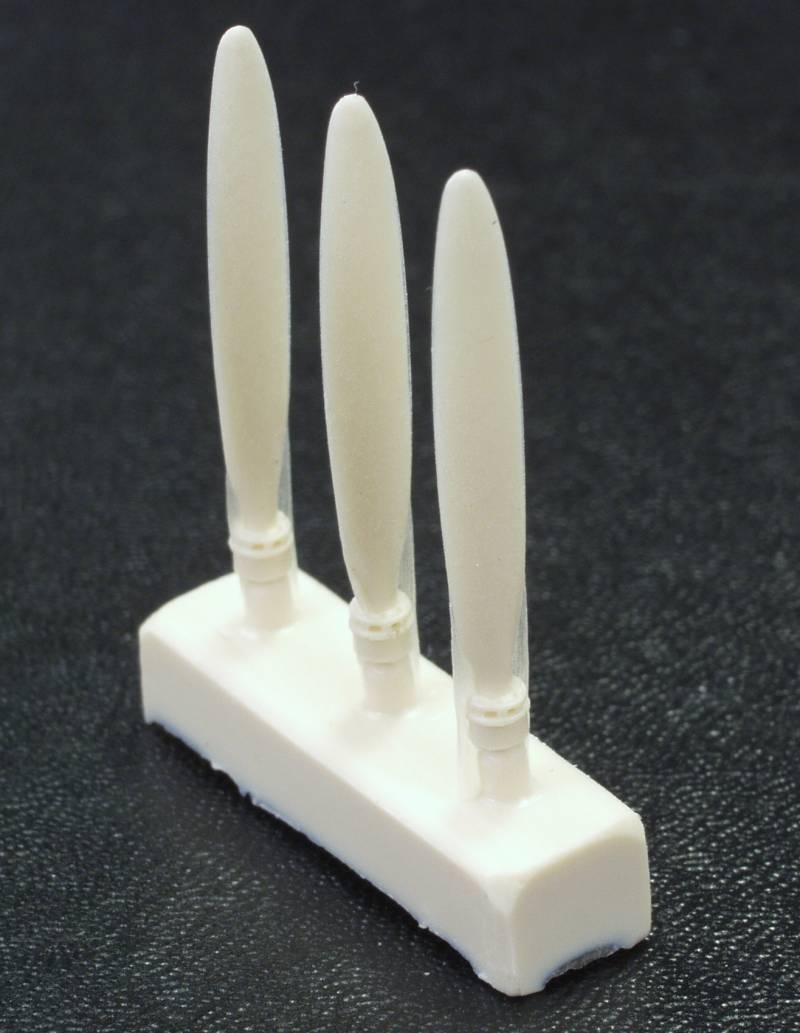
Conclusions
This is a pretty typical all resin short run kit. It was made in relatively low numbers so finding one can be difficult. It should go together relatively easy if the review linked below is any indication and should not be a problem for anyone who has built a few all resin kits. It's the only game in town if you want a 1/48 scale Fw 187.
Links to kit build or reviews
A build / review can be found here.
References
Warplanes of the Third Reich by William Green
Focke-Wulf Fw 187, An Illustrated History by Dietmar Hermann and Peter Petrick